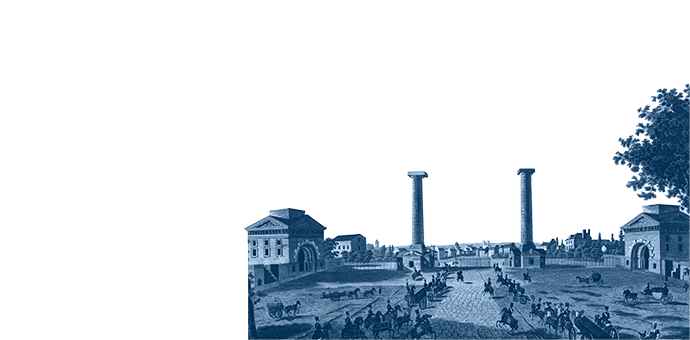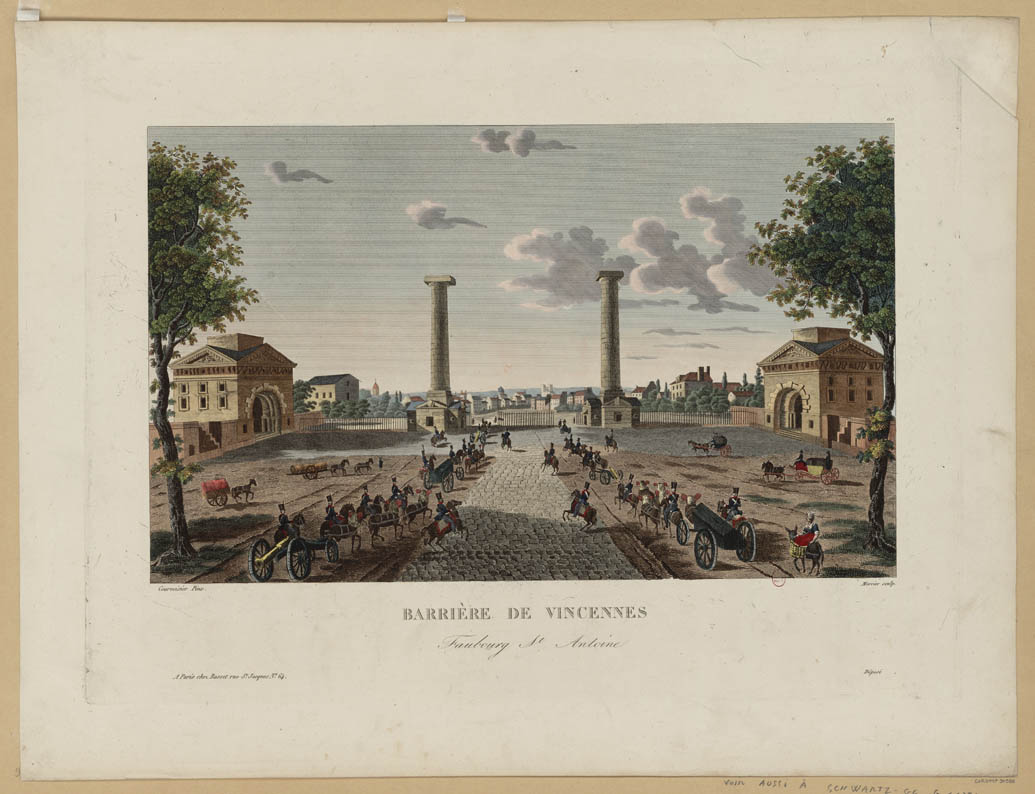The Place de la Nation and its neighborhood
In 1789, this vast square was only a vacant plot of land located at the gates of Paris: the Place du Trône. Two tall and spectacular columns were erected in 1788 and two square pavilions announced the tollgate: this is where people had to pay taxes on merchandise when they entering the city. During the Revolution, the people took over this area, which represented this unpopular tax, and the tollgate became known as the “Place du Trône-Renversé” (“Toppled Throne”). Between June 14-July 27, 1794, more than 1,300 people were guillotined here before being buried in a mass grave in the neighboring Picpus cemetery. Renamed Place de la Nation in 1880, this was where the plaster model of the statue Triomphe de la République (by Jules Dalou) was erected and inaugurated in 1889, to celebrate the French Revolution’s centennial. Since then, along with the Place de la Bastille and the Place de la République, “Nation” remains the starting or end point for many demonstrations.

 Chronology
Chronology
-
February 25, 1790
An uprising breaks out in protest against the tollbooths at the Throne Gate -
May 1, 1791
At the former Vincennes gate, the neighborhood’s residents celebrate the removal of Paris’s excise tax -
April 15, 1792
The procession in honor of the Châteauvieux soldiers departs from the Throne Gate -
June 14, 1794
The guillotine is relocated to the Place du Trône-Renversé (now the Place de la Nation) -
July 27, 1794
The guillotine is removed from the Place du Trône-Renversé





